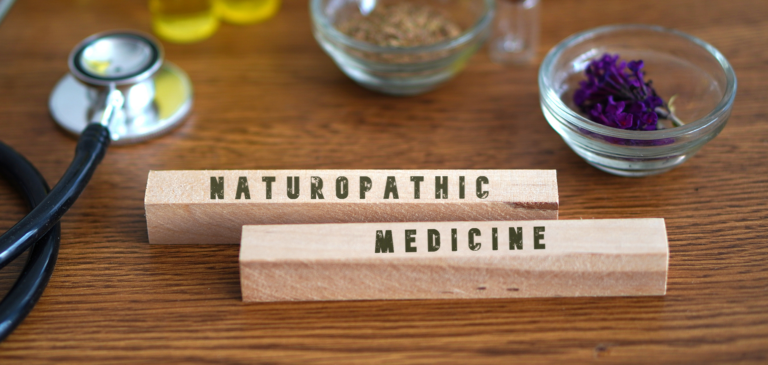A Deep Dive into Men's Health: Prostate and Bladder Concerns
Summary
Conditions affecting the prostate and bladder are common in men, especially in older age. Adopting healthy habits such as consuming a balanced diet, getting sufficient sleep, and including herbs that support the prostate and urinary tract may help prevent, delay, or relieve symptoms associated with benign prostatic hyperplasia and lower urinary tract symptoms.
Prostate and Bladder Health
Maintaining and supporting prostate health in men is of utmost importance, especially throughout older age. The prostate is an accessory gland located just below the bladder. When it becomes enlarged, it can obstruct the flow of urine which may damage the bladder and kidneys.1 The prostate is approximately the size of a walnut, but conditions affecting the prostate can seriously affect men’s health and their quality of life.
Prostate cancer
Prostate cancer is the second most commonly diagnosed type of cancer and the fifth leading cause of death worldwide for males.2 Risk factors for prostate cancer include age, obesity, family history, and ethnicity.2 Prostate cancer prevalence varies between populations with a higher incidence in more developed areas such as North America and Europe and a lower incidence in regions including sub-Saharan Africa.2,3 While rates remain lower in African countries, the incidence and mortality of prostate cancer are actually significantly higher in men with African ancestry, and prostate tumors tend to develop earlier and are more aggressive compared to European-American men.3 This can partially be explained through differences in disease surveillance and detection, but studies have also found distinct biological mechanisms in men with African ancestry versus those with European ancestry including changes in DNA methylation, acquired chromosomal aberrations, and gene expression patterns, all of which may contribute to discrepancies in the incidence, severity, and outcome of disease.3
Benign prostatic hyperplasia and lower urinary tract symptoms
Benign prostatic hyperplasia (BPH) is the enlargement of the prostate gland and occurs in nearly 90 percent of men aged 80 years and older.4,5 The enlargement is not cancerous but can still cause issues within the urinary tract. It is associated with benign prostatic obstruction which causes bladder outlet obstruction along with lower urinary tract symptoms (LUTS).4,5 Characteristics of LUTS include:6
- incomplete bladder emptying
- poor stream
- straining to urinate
- increased frequency of urination
- nocturia, or waking during the night to urinate
LUTS is the fourth most diagnosed disease in men aged 50 years and older; chronic LUTS can lead to loss of sleep, social isolation, depression, and decreased quality of life.7 The pathogenesis of BPH is not fully known, but studies have been able to piece together evidence pointing to multifactorial mechanisms including hormone alterations, the presence of metabolic syndrome, and age-related tissue remodeling.4,8 Inflammation is also likely a key player in BPH; prostate cells can auto-stimulate their own growth through secretion of inflammatory mediators.4,8 As such, prostatic cells may be uniquely sensitive to anti-inflammatory components aiming to relieve symptoms.8
Strategies to Support Prostate and Bladder Health
Diet
Consuming a healthy, balanced diet can support prostate health as metabolic syndrome has been found to be associated with prostatic diseases including hypogonadism, infertility, BPH, and LUTS.9 Specifically, metabolic syndrome is associated with an enlarged prostate and prostatic inflammation, likely through dysregulated metabolism, altered signaling networks, modifications of sex hormone pathways and changes in cytokines, growth factors, and satiety hormones.9
Including tomato products as part of a healthy diet may also support prostate health. Higher consumption of tomatoes, tomato products, and lycopene has been found to lower the risk of developing prostate cancer, including aggressive cancer.1 Lycopene is a phytonutrient found in relatively higher concentrations in the prostate and likely contributes to beneficial changes in cellular proliferation and apoptosis, inhibition of inflammation, modulation of local androgen signaling, reduction of prostate epithelial cell proliferation, and decreased oxidative stress.1,8 It may also work synergistically with other phytochemicals found in tomatoes including glycoalkaloids, phenolic compounds including quercetin and chlorogenic acid, salicylates, and carotenoids.1
The micronutrient selenium may also be important for prostate health. Dietary sources of selenium include Brazilian nuts, fish, and wheat germ.8 Epidemiological studies have demonstrated a relationship between higher intake of selenium and reduced risk of developing certain cancers, including prostate cancer.8 While the mechanism has not been fully elucidated, selenium may help protect against cancer through antioxidant, anti-inflammatory, and anti-cancer pathways.8
Herbs for prostate health
Several different types of drugs are approved for use in patients with BPH and LUTS, however, phytotherapies have also been studied including pumpkin seeds, South African star grass, saw palmetto and roots of the stinging nettle plant.4 Additionally, combining herbal interventions with therapeutics may result in a more targeted, effective treatment strategy for BPH and LUTS.8
Saw palmetto (Serenoa repens) is the most widely used and most thoroughly studied plant extract for BPH and LUTS.4 Saw palmetto may inhibit a key enzyme in the production of metabolites that stimulate prostate growth and development.8 It may also exert anti-androgenic, anti-proliferative, anti-inflammatory, and anti-edema effects, as well as interact with adrenergic and muscarinic receptors in the lower urinary tract to lessen obstructive symptoms of BPH.8 Saw palmetto extract can also be combined with nutrients such as selenium and lycopene to increase its effect.8 One study found that the combination of these three compounds was more effective in preventing BPH than saw palmetto alone and inhibited growth by 83 percent.8 Extracts from S. repens have also been found to reduce nocturia, improve maximum urinary flow rate compared to a placebo, and relieve LUTS to the same extent as common therapeutic interventions while also resolving underlying inflammation.4
Curcumin is another well-researched compound for its protective effects against prostate cancer. It is found in the herb turmeric (Curcuma longa) and is commonly used as a culinary ingredient in many Asian countries.2 Curcumin has been extensively studied for its bioactive properties including working as an antioxidant, antimicrobial, and anti-inflammatory agent.2 As it relates to prostate cancer cells, curcumin inhibited cellular viability, proliferation, survival, migration and invasion, and adhesion.2 The cellular targets of curcumin include many signaling molecules that target and regulate cellular function including mTOR, MAPK, and NF-κB.2 In animal models of prostate cancer, curcumin promoted apoptosis and inhibited the growth, volume, formation, development, proliferation, and angiogenesis of prostate cancer tumors.2
The root of stinging nettle, Urtica dioica, has been found to be effective in improving symptoms of BPH and LUTS. In a six-month trial, 81 percent of patients taking U. dioica reported improved LUTS, which was significantly more than the reported improvement in the placebo group.10 Objective measures were also improved in the U. dioica group, including peak flow rate and international prostate symptom score.10 Ingestion of U. dioica also resulted in a modest decrease in prostate size.10 Similarly, a year-long trial with a dry extract of stinging nettle root reduced irritative symptoms of BPH, likely due to its anti-inflammatory and anti-proliferative effects.11
Other plants and herbs may also help support the prostate and bladder. Several plants in the Tillandsia genus, including Jamaican Ball Moss and Spanish moss, have been studied for their effects on prostate health. A highly potent flavanone isolate from Tillandsia recurvata L. demonstrated both broad and specific anti-cancer activity in cell lines.12 Similarly, Crataeva nurvala bark extract may protect against testosterone-induced oxidative stress and, when used in combination with other herbs, improved symptoms of overactive bladder including urinary frequency.13,14
Sleep
Getting adequate sleep is another way to support prostate and bladder health. Nocturia, a condition of waking in the night to urinate, can cause serious disturbances in sleep and negatively affect sleep quality.6 Patients with LUTS who experienced nocturia self-reported as being “always” or “usually” tired significantly more often than men who only reported daytime urinary issues.6 In the same study, only 13 percent of men with nocturia had continuous sleep periods of more than two to three hours, indicating severe sleep disturbances.6 Additionally, the relationship seems to be bidirectional with poor sleep, including obstructive sleep apnea, worsening LUTS symptoms.6
Supporting the body throughout aging is extremely important, especially for men. Health conditions afflicting the prostate and urinary system are very common, but there are lifestyle modifications that may help relieve symptoms of BPH and LUTS and may help protect against prostate cancer.
- Stacewicz-Sapuntzakis, M., Bowen, P.E. (2005). Role of lycopene and tomato products in prostate health. Biochim Biophys Acta, 1740(2):202-205.
- Termini, D., Hartogh, D.J.D., Jaglanian, A., Tsiani, E. (2020). Curcumin against Prostate Cancer: Current Evidence. Biomolecules, 10(11):1536-1575.
- Martin, D.N., Starks, A.M., Ambs, S. (2013). Biological Determinants of Health Disparities in Prostate Cancer. Curr Opin Oncol, 25(3):235-241.
- De Nunzio, C., Salonia, A., Gacci, M., Ficarra, V. (2020). Inflammation is a target of medical treatment for lower urinary tract symptoms associated with benign prostatic hyperplasia. World J Urol, 38(11):2771-2779.
- Trumbeckas, D., Milonas, D., Jievaltas, M., Matjosaitis, A.J., Kincius, M., Grybas, A., Kopustinkas, V. (2011). Importance of prostate volume and urinary flow rate in prediction of bladder outlet obstruction in men with symptomatic benign prostatic hyperplasia. Cent European J Urol, 64(2):75-79.
- Kohn, T.P., Kohn, J.R., Haney, N.M., Pastuszak, A.W., Lipshultz, L.I. (2020). The effect of sleep on men’s health. Trans Androl Urol, 9(Suppl 2):S178-S185.
- Shore, N. (2015). A Review of the Prostatic Urethral Life for Lower Urinary Tract Symptoms: Symptom Relief, Flow Improvement, and Preservation of Sexual Function in Men With Benign Prostatic Hyperplasia. Curr Bladder Dysfunct Rep, 10(2):186-192.
- Russo, A., Capogrosso, P., La Croce, G., Ventimiglia, E., Boeri, L., Briganti, A., Damiano, R., Montorsi, F., Salonia, A. (2016). Serenoa repens, selenium and lycopene to manage lower urinary tract symptoms suggestive for benign prostatic hyperplasia. Expert Opin Drug Saf, 15(12):1661-1670.
- Kim, W., Kim, J. (2017). Looking to the metabolic landscapes for prostate health monitoring. Prostate Int, 5(3):85-88.
- Safarinejad, M.R. (2005). Urtica dioica for treatment of benign prostatic hyperplasia: a prospective, randomized, double-blind, placebo-controlled, crossover study. J Herb Pharmacother, 5(4):1-11.
- Schneider, T., Rübben, H. (2004). Stinging nettle root extract (Bazoton-uno) in long term treatment of benign prostatic syndrome (BPS). Results of a randomized, double-blind, placebo controlled multicenter study after 12 months. Urologe A, 43(3), 302-306.
- Lowe, H.I.C., Toyang, N.J., Watson, C.T., Ayeah, K.N., Bryant, J. (2017) HLBT-100: a highly potent anti-cancer flavanone from Tillandsia recurvata (L.) L. Cancer Cell Int, 17:38-49.
- Kumar, D.G., Deepa, P., Rathi, M.A., Meenaksi, P., Gopalakrishnan, V. (2012). Modulatory effects of Crataeva nurvala bark against testosterone and N-methyl-N-nitrosourea-induced oxidative damage in prostate of male albino rats. Pharmacogn Mag, 8(32):285-291.
- Schoendorfer, N., Sharp, N., Seipel, T., Schauss, A.G., Ahuja, K.D.K. (2018). Urox containing concentrated extracts of Crataeva nurvala stem bark, Equisetum arvense stem and Lindera aggregate root, in the treatment of symptoms of overactive bladder and urinary incontinence: a phase 2, randomised, double-blind placebo controlled trial. BMC Complement Altern Med, 18(1):42.







